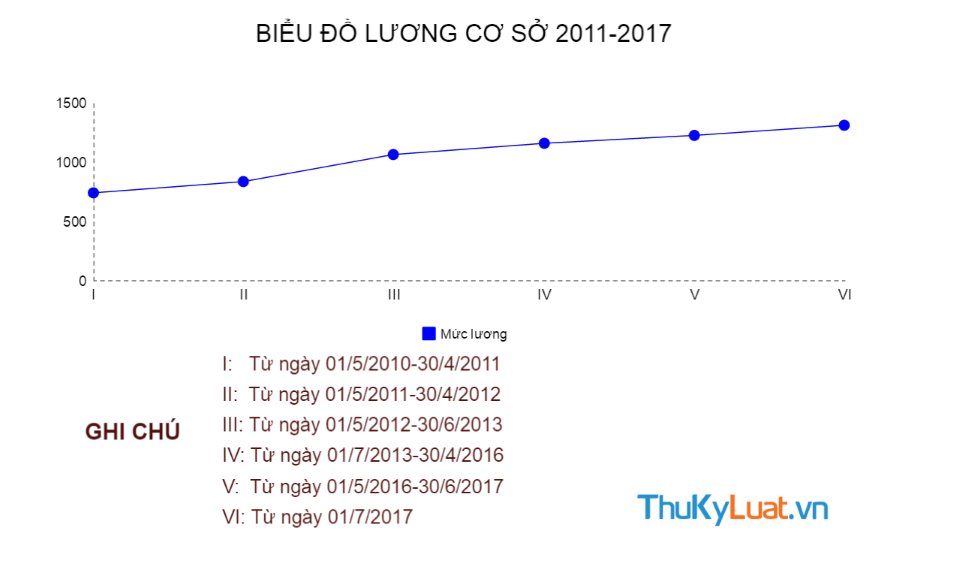Increasing regional minimum wage and statutory pay rate is always an issue of interest to workers, officials and public employees, businesses... And this issue is becoming hotter than ever as both minimum wage and statutory pay rate are proposed to increase in 2017.

Regional minimum wage is the lowest level used as a basis for enterprises and employees to negotiate and pay wages. The wage paid to employees working under normal working conditions, ensuring full monthly working hours, and completing the agreed-upon workload or job must ensure:
- Not lower than the regional minimum wage for untrained employees performing the simplest tasks;- At least 7% higher than the regional minimum wage for trained employees.
Meanwhile, the statutory pay rate is the wage used as a basis for calculating wages in salary scales, allowance levels, and implementing other policies; calculating operating fees, living expenses; calculating deductions and policies enjoyed based on this wage.
Recently, the Ministry of Labor, War Invalids and Social Affairs proposed an increase in the regional minimum wage for 2017, with an increase ranging from VND 180,000 – VND 250,000 per month depending on the region, starting from January 01, 2017. For the statutory pay rate, the Government of Vietnam has proposed an increase in the statutory pay rate for 2017 of 7% (reaching VND 1.3 million per month). The proposal to increase the regional minimum wage and the statutory pay rate has sparked debate from many sides, with many concerns and worries.
Regional Minimum Wage 2017: Increase of 7.3%
An increase in wages helps to equalize income levels among different groups of workers in society. It is easy to recognize that a wage increase is good for workers. However, the proposal to increase the regional minimum wage by 7.3% compared to 2017 has faced opposition from enterprises, especially textile companies, as it creates pressure and burdens for businesses (increasing labor costs, increasing social insurance contributions, health insurance, unemployment insurance, and union fees).
Workers themselves are not very enthusiastic about the wage increase, as the actual income of most workers is still low compared to basic living needs, insufficient to cover necessary living expenses. When wages increase, corresponding allowances will decrease, after deducting social insurance, health insurance, and unemployment insurance fees, and with living costs and rent increasing alongside wages, the lives of workers become even more difficult.
In the Draft Decree on regional minimum wages for 2017, specific provisions on the minimum wage applicable in each region are detailed, along with some changes regarding the implementation areas. If this draft is approved and signed into law, from January 01, 2017, there will be cases of wage increases for employees as follows:
- Case 1: Wages lower than the 2017 regional minimum wage- Employees working in enterprises, cooperative unions, cooperatives, cooperative groups, farms, households, individuals, and agencies, organizations that use labor under contracts as prescribed by the Labor Code 2012, with current wages lower than the 2017 regional minimum wage.- Domestic workers under labor contracts with current wages (including living expenses at the employer's family if any) lower than the 2017 regional minimum wage (Clause 1, Article 15 of Decree 27/2014/ND-CP).- Case 2: Wage increases according to enterprise regulations.
Employees with current wages equal to or higher than the 2017 regional minimum wage but whose employers decide to increase wages:
- Working in enterprises, cooperative unions, cooperatives, cooperative groups, farms, households, individuals, and agencies, organizations using labor under labor contracts pursuant to the Labor Code 2012 (Based on Clause 1, Article 90 of the Labor Code 2012).- Domestic workers with labor contracts (Based on Clause 1, Article 15 of Decree 27).

Increase statutory pay rate 2017 by 7%: Where is the money?
Considering the current situation, with high prices and difficult living conditions for officials, the government has proposed a 7% wage increase, adjusting pensions, social insurance benefits, and preferential allowances for people with meritorious services to increase equal to the statutory pay rate increase, effective from July 1, 2017, is reasonable according to many opinions. The issue here is where the money comes from to increase wages; how does the budget cover the wage increase during difficult times and high public debt (public debt grew at a rate of approximately 18.4% over 5 years from 2011 to 2015, three times the economic growth rate of 5.91%).
Increasing the statutory pay rate by 7% in 2017 requires decisive streamlining of staff, rearranging the state administrative apparatus, improving work efficiency, and careful consideration, clear identification of sources for salary adjustments. Streamlining staff has long been a problem we have been addressing but with little effect; the cumbersome, ineffective apparatus makes streamlining very difficult when nepotism still exists in some state agencies.
Below is a chart of statutory pay rate from 2010 - 2017 (if the statutory pay rate increase is approved)

The proposals to increase the regional minimum wage by 7.3% and the statutory pay rate by 7% in 2017 mentioned above are subjects for discussion, and we must wait for the official decision from the Government of Vietnam.
 Article table of contents
Article table of contents





.Medium.png)
.Medium.png)
.Medium.png)
.Medium.png)
